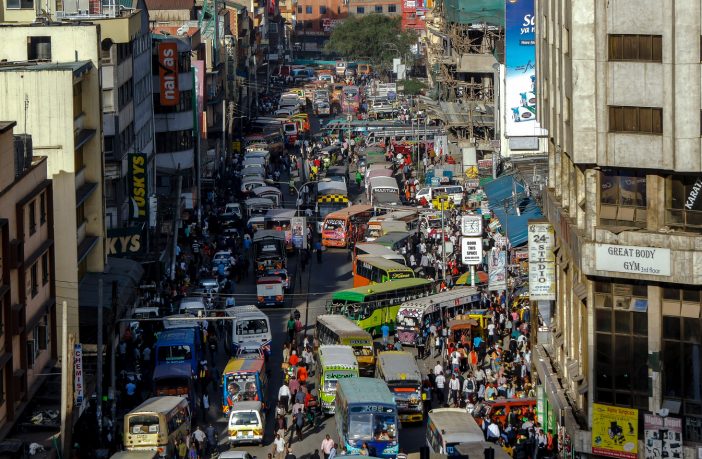- When we think of migration, we think of movement. We think of the movement of people simply looking for greener pastures – a better life for themselves.
- But we also think of war, of conflict, of an unstable situation in a specific place forcing the hand of a location’s residents to seek safety elsewhere.
- Historically and into present day, war has been the reason for the increased presence of refugees.
- Instability in places such as Syria, Iraq, or the Central African Republic have caused millions to flee their homes.
- Lurking amongst this migration due to conflict, however, is the migration of people at mercy of the changing environmental conditions of the Earth – climate migration.
Island nations such as Kiribati in the Central Pacific are bearing the brunt of this climate change – as extreme rises in sea levels sees homes destroyed, leaves people without livelihoods, and makes places which people have lived in for generations inhospitable. Architectural interventions are made, such as walls built out of stone and driftwood to withstand the frequent storm surges, but it is far from enough. Estimates are that in the next 30 or 40 years, Kiribati could be underwater. This is just one example of the perilous state a lot of nations around the world are in due to climate change, a state that has worldwide implications on the urban quality of cities around the world as movement between cities and countries continues to increase.

While it is island nations like Kiribati that have arguably received the larger share of global attention in regards to climate change, the effect of climate change on the African continent is given less of a spotlight on the world stage. Though contributing only about 3% to the world’s carbon dioxide emissions, the continent is disproportionately affected by the effects of climate change – and when talking about climate migration, a simultaneous conversation has to be had on the role that architecture plays, on how design choices play their part in changing the lives of “climate refugees” for better or for worse.
The Horn of Africa area has been hugely affected by droughts over the last few decades, causing a large influx of inter-continental migrants in Africa’s East. Some migrants move to settle into UNHCR camps dotted around the continent, such as the Daadab Refugee Complex in North-Eastern Kenya. However, camps like these can deprive refugees of access to resources and basic freedoms. Spatially, camps like these are not always the most welcoming of spaces, with most camps being organised in simple rows of tents, refugee communities unable to truly turn their immediate spatial condition into a welcoming home.

And it doesn’t end there. Seeking greater economic opportunities, climate refugees head away from refugee camps and into urban centres, which are put under pressure as they are ill-equipped to handle an influx of migrants. The city of Nairobi, for example, is home to around 81,000 refugees, but apart from that number, there are also internal migrants who’ve moved from rural Kenya to the capital, as droughts wreak havoc on the livelihoods of crops. Nairobi, in turn, faces a rise in informal settlements, with a significant segment of its population unable to access proper sanitation facilities or water supplies for home consumption.

Hope, however, is definitely on the horizon. Innovative projects such as the Makoko Floating School in Lagos, Nigeria – although it collapsed in 2016 – are still useful prototypes in shaping a climate-resilient African continent. It is worth a strong reminder, however, that the climate change conversation cannot happen in a vacuum. The carbon emitted by those in the global south pales in comparison to that emitted by those in the global north – the average person in the UK for example, emits 8.3 tonnes of carbon dioxide a year, compared to 0.09 tonnes in Rwanda.

New technologies and new ways of building will help the African continent mitigate the effects of climate change and climate migration, but it is also the matter of a more equitable global order, one which will truly see climate-conscious African architecture able to leave a tangible mark.
Author: Matthew Maganga
This article was first published in Arch Daily and is republished with permission.















